Useful tips for gardeners: how to properly care for a pumpkin
Pumpkin has long been one of the favorite vegetable garden, it grows everywhere throughout Russia. This is a rather unpretentious plant, however, proper care of the pumpkin allows you to get more beautiful and large fruits, very pleasant to the taste. There are dozens of pumpkin varieties you can plant in your garden and use to create viable hybrids.
Content:
- Popular pumpkin varieties for growing
- Pumpkin planting rules
- Helpful tips for caring for your pumpkin
- Diseases and pests of pumpkin
Popular pumpkin varieties for growing
For the first time, pumpkin in Russia began to grow back in the 16th century, it quickly became widespread due to the large amount of nutrients and good taste. Common varieties differ significantly from each other in the type of fruit and in the growing conditions, you can choose the right solution for each climatic zone. There are dozens of varieties pumpkin, fruits differ in shape, color and size. The largest pumpkins weigh up to 200 kg.
There are a lot of pumpkin varieties, but they are all divided into several varieties:
- Hardy varieties have fruits with a very dense crust. They keep well, therefore they are widespread. Common hardy varieties include Freckle, Almond, Altai, Kustovaya orange pumpkin and many others. These varieties have the tastiest seeds, so they are grown everywhere.
- Large-fruited varieties are loved by gardeners precisely because of the large size of the fruit with delicious sugary pulp. Sugar content reaches 15%, while the fruits are well stored. In your own garden, you can easily grow pumpkins weighing up to 50 kg. Large-fruited varieties include Zorka, Rossiyanka, Marble, Volzhskaya gray, Winter sweet, Smile and others.
- Muscat varieties are considered the most capricious; they must be removed before frost. A characteristic feature of nutmeg varieties is a pentahedral stalk, which expands noticeably towards the base. All of them are thermophilic, so they are not suitable for growing in all Russian regions. Common pumpkin varieties are Butternat, Vitaminnaya, Prikubanskaya, Palav Kadu.
The variety is selected according to climatic characteristics: adapted varieties are much easier to grow, they give a richer harvest and do not require complex leaving... Ornamental pumpkins are also in great demand: they are grown as a decoration of the site, and their fruits with a very hard skin are used to create various crafts.
Pumpkin planting rules
Pumpkin is a melon crop, so enough free space must be allocated for it. Seeds planted at a distance of 50 cm from each other, since the shoots will quickly grow and fill the entire allotted space. The culture is sensitive to the top fertile soil layer, as it has a large number of branching small roots. She needs a well-lit place, it is advisable to plant a pumpkin on the south side of the site.
Any sort of pumpkin needs regular feeding to increase the fertility of the soil.
During the spring digging of the site, organic and potassium fertilizers, and with increased acidity of the soil - lime or ash in a small amount. During the planting itself, humus is introduced directly into the hole.
Most varieties are planted as seeds in the ground, but all butternut squash is an exception. Since they do not have time to ripen in a short summer in most regions, a seedling planting method is used for them. It is advisable to plant seeds in the beds where they were previously grown beet, eggplant, tomato or cabbage... It is not necessary to re-plant in the same place for several years, as well as grow pumpkin on site. zucchini or cucumbers.
Seed planting is carried out as follows:
- To improve germination, seeds are warmed up before planting for several hours at a temperature of at least 40 degrees. After that, they need to be soaked in an ash solution: two tablespoons of ash per liter of water are enough. As a result, the seed shells swell, and it will be much easier for the embryo to break through them.
- The bed is laid out in rows, after which it is necessary to make holes with a diameter of up to 30 cm.The holes must be well shed with water, their depth is 5-6 cm.
- Three seeds are planted in each hole at a distance from each other. After germination, it will be necessary to leave only the two strongest shoots, and pinch the third.
The distance between the rows on the garden bed must be at least one meter. Many gardeners plant pumpkins by staggering the holes: this allows each sprout to leave more space, and the plants will not interfere with each other. In the future, the soil will need to be regularly loosened, weeds are removed from the garden so that they do not interfere with young plants.
Pumpkin is one of the unpretentious vegetables; it takes root well in almost any soil.
With the seedling method of planting, the seeds are planted in containers with a volume of about 0.5 liters at the end of April. Seedlings are watered with warm water, they are planted in a greenhouse or under a greenhouse film about a month after germination. Butternut pumpkin is very afraid of frost, therefore, if the weather conditions deteriorate after planting in open ground, it is advisable to cover it with a film overnight. Growing pumpkin usually does not require complex constant work, but the characteristics of the variety must be taken into account.
Helpful tips for caring for your pumpkin
Pumpkin - a heat-loving and moisture-loving plant, it needs regular watering. Abundant watering recommended after the formation of ovaries, otherwise the leaves will grow actively, and not the fruits. However, plants should not suffer from a lack of moisture: pumpkin actively evaporates water through large leaves, providing a favorable microclimate around the flowers.
Lack of moisture during the growing period will lead to the fact that the fruits are too small.
The heat is destructive for the pumpkin: the plant can die very quickly. For irrigation, it is permissible to use only warm water, its temperature should be at least +15 degrees. If you water the plant with water from an artesian well, this will negatively affect the condition root system, which can lead to the death of the entire bush. Watering stops during the ripening period: pumpkins must gain sugar content in order for the pulp to acquire a pleasant taste.
Top dressing should be carried out twice a summer: before and during flowering:
- Before flowering pumpkins are fed with infusion mullein, and also bring phosphorus-potassium fertilizers.
- During the flowering period, a small amount of wood ash is introduced under each root.
When the fruits begin to pour, they must be protected from rotting when in contact with the ground. For this, various materials are placed under them to protect the fruit from moisture.
It is equally important to carry out the harvest correctly. The earliest ripe nutmeg varieties harvested in early September, they are cut off along with the stalk to improve preservation.Late-ripening varieties can be in the garden until mid-autumn, they need to be removed before frost begins. Large pumpkins often do not have time to ripen in the garden, so they are removed for storage in a warm place, and they gradually ripen.
Diseases and pests of pumpkin
Like all garden vegetables, pumpkin is susceptible to various bacterial and fungal diseases, capable of completely ruining the harvest. The most dangerous diseases for a plant include:
- Bacteriosis is a disease that affects the leaves: they develop noticeable brown spots, over time they turn into holes in the leaf plates. In addition, this disease provokes curvature of the fruit and significantly impairs their quality. Affected plants can no longer be saved: they must be removed from the garden and buried. For prevention, copper oxychloride and Bordeaux mixture are used - they are used to process seeds before planting.
- White rot is a common fungal infection that affects the leaves of a plant. First, a white bloom forms on the tissues of the plant, then the affected areas begin to rot, and gray fruiting bodies of the fungus form on them. The affected areas must be covered with charcoal or fine lime particles. For prevention, it is important to remove in time weedsspreading the disease, as well as follow the rules crop rotation.
- Powdery mildew Is another disease that affects the leaves and stems of the plant. It manifests itself as a whitish powdery bloom, first forming in the form of spots, and then covering the entire surface of the leaf. To combat powdery mildew, a mullein solution is used, as well as chemicals.
The most common pumpkin pests are spider mites and melon aphids. The main method of prevention is timely watering and compliance with the rules of crop rotation, as well as a quick response to the appearance pests... It is better to remove the affected plants from the field, since it is extremely difficult to completely get rid of the spider mite, and it spreads through the plants very quickly.
Useful properties of pumpkin
Pumpkin has become popular not only because of the pleasant taste of the fruit, but also because of their beneficial properties. The pulp contains an almost complete set of vitamins necessary for a person, as well as useful fiber. Pumpkin is useful in food for intestinal diseases, and its seeds are used as an effective anthelmintic agent. It is a source of natural antioxidants and is also an effective remedy for tuberculosis, diabetes, gout and gallstones.
Pumpkin juice is a source of vitamins and a very useful remedy for colds, it will become an effective means of strengthening the immune system.
Due to the content of the pulp, juice helps to combat constipation, it is also a common folk remedy for hemorrhoids. In cosmetology, various masks are made from pumpkin; they are used as a tonic for rejuvenating the skin of the face.
Pumpkin is actively used in cooking: it is used in the preparation of pies, desserts, as well as various salads.
More information can be found in the video.



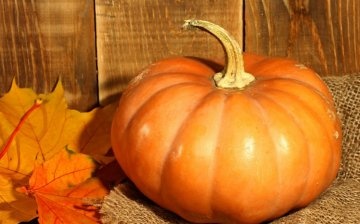
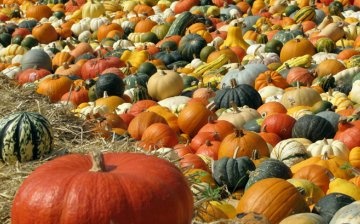
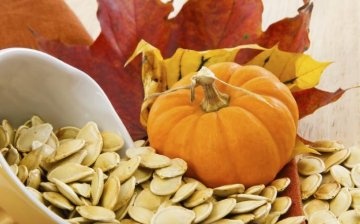
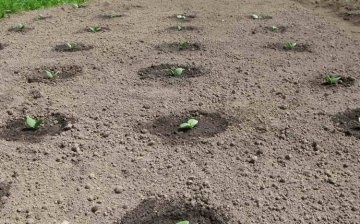
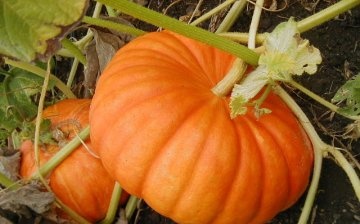
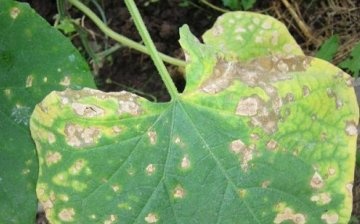









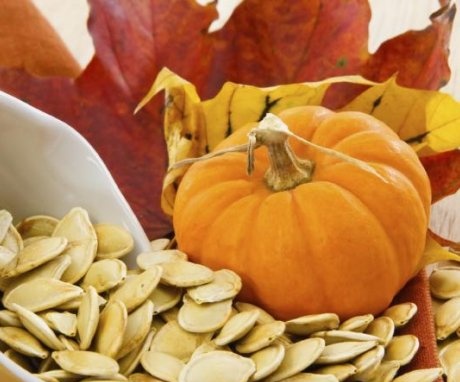
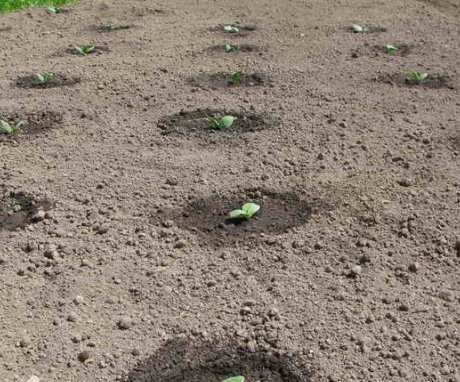
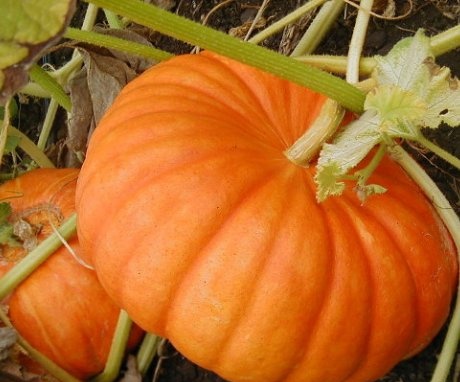
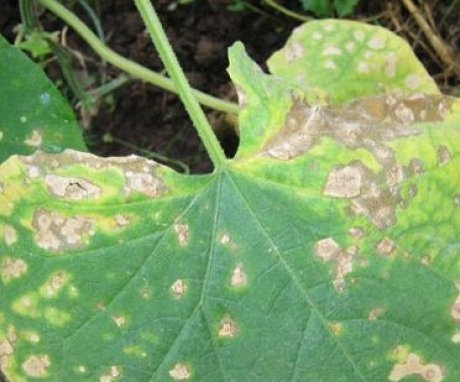
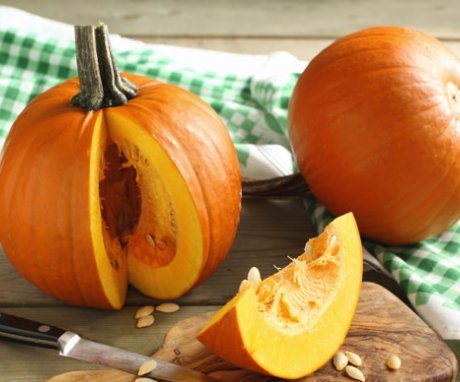
It is very simple to grow a pumpkin on the site, the main thing is to plant seeds not thickly, and the place where it grows is not shaded by trees and high fences. Usually, so many pumpkins grow in our country house that it is not clear what to do with such a large harvest.
It is very simple to grow a pumpkin on the site, the main thing is to plant seeds not thickly, and the place where it grows is not shaded by trees and high fences. Usually, so many pumpkins grow in our country house that it is not clear what to do with such a large harvest.
For some reason, at my dacha, the zucchini turns out to be excellent, but the pumpkin does not work out. Now, I've tried it a couple of times, but the result is the same - it turns out a little.At the same time, the result of the neighbor is completely different. Maybe it is more demanding on fertilizers than squash?